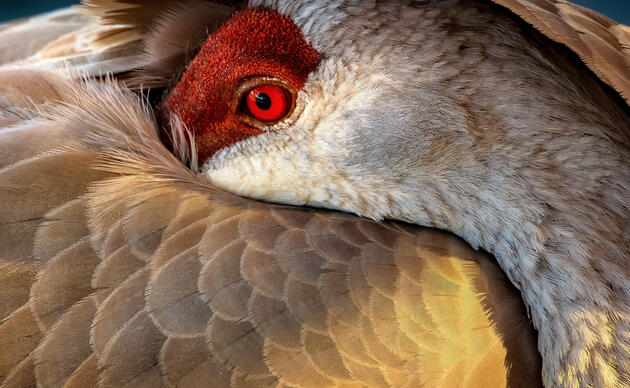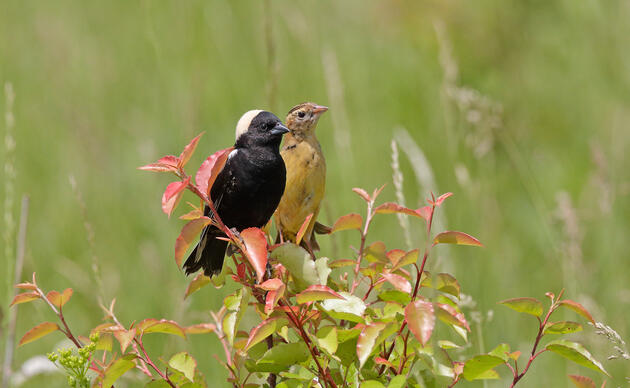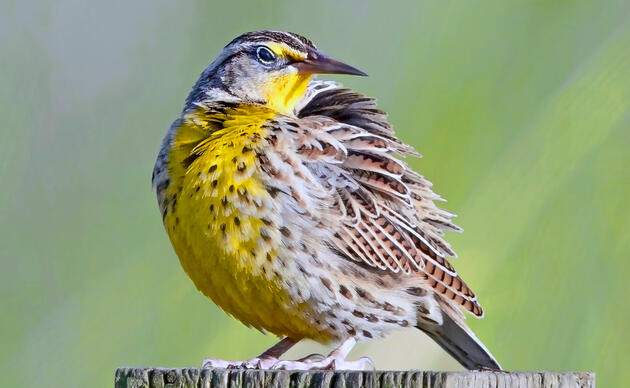Spring has finally arrived in the Central Flyway, bringing with it longer days, warmer temperatures, budding plants, the emergence of insects, and bird songs. One particular bird rises above the rest and seems to be the most popular specimen in spring – the American Woodcock. This fascinating shorebird, known by various nicknames such as Timberdoodle, Bogsucker, and Mudbat, boasts an impressive array of adaptations that truly justify its acclaim. These birds are evolutionary marvels, showcasing unique features in their eyes, beaks, and even their brains!
Why are their eyes positioned so far back on their heads?
Woodcocks are specially adapted to hunt for worms. They use their flexible bill tips to probe the soil for their prey. While engrossed in foraging, they must remain vigilant against predators, which is where their eye placement comes into play. The eyes of woodcocks are located high and towards the back of their heads, providing them with a panoramic view.
To achieve this, woodcocks have also repositioned their ears and brains. Unlike most birds, whose ears sit behind their eyes, woodcocks have theirs positioned below the eyes, allowing the eyes to be placed as far back as possible. This adaptation has also led to a unique arrangement in their brains: a woodcock’s brain is essentially turned upside down, with the cerebellum located beneath the brain instead of at the back of the skull, as seen in other birds.
What is a Peent?
A "peent" is the distinctive sound made by woodcocks during their courtship display, which they are well-known for. Additionally, they produce a lesser-known call referred to as “tuko” or “wh’ook” before the “peent,” though this is typically inaudible unless one is very close to the bird. The "peent" is created by expelling air past the syrinx, a specialized organ, causing membranes within it to vibrate and produce sound. They can manipulate the pitch and volume by adjusting their exhalation and the tension of the membranes.
Following their "peenting," males launch into the sky for the "sky dance," a captivating part of the courtship display. They soar hundreds of feet while creating a whistling sound as air flows through their flight feathers. As they descend, they zigzag and emit chirping calls while continuing to whistle with their wings. This enchanting performance continues well into the night.
Plumage
So, what is a shorebird doing in the forest instead of a sandy shore? The plumage of woodcocks is intricately patterned to mimic the forest floor, providing excellent camouflage against predators. They can lie still among the leaves, effectively disappearing. In fact, their disguises are so effective that females simply create a shallow depression in the leaf litter to lay their eggs. The hatchlings are precocial, meaning they are feathered and can walk away from the nest within an hour or two after hatching. Within their first week, they start probing for worms and become independent in just over a month.
Woodcocks in the Prairie?
While American Woodcocks typically inhabit young forests, they are also found in the Great Plains, which is the very western edge of their range. As landscapes evolve and wooded habitats expand in areas that were historically prairie, woodcocks appear to be following suit. Audubon Great Plains’ Avian Biologist Stephen Brenner, in collaboration with the Nebraska Game and Parks Commission, is conducting research on their migratory patterns in Nebraska.
To learn more about their findings, check out: https://greatplains.audubon.org/news/american-woodcock-unraveling-migration-forest-breeding-shorebird-prairie-state.
The American Woodcock is truly a marvel among birds. Their incredible adaptations and impressive courtship display crown them as spring royalty in my book.





